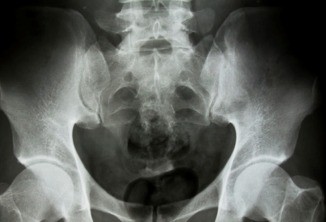 What is the Pelvic Floor?
What is the Pelvic Floor?
The floor of the pelvis is like a hammock made up of layers of muscle and other tissues. At the back it’s connected to the tailbone and stretches to the pubic bone in front.
A man’s pelvic floor muscles support his bladder and bowel, a woman’s also supports her womb and holds up the baby during pregnancy. The urethra (the tube that carries urine from the bladder to outside the body) and the back passage pass through the pelvic floor muscles, which help you to control your bladder and bowel actions. Pelvic floor muscles also help sexual function, so it is very important to keep them strong.
Pelvic floor muscles can be made weaker by:
- surgery for bladder or bowel problems, including chronic constipation
- being obese
- heavy lifting
- not being fit
- a chronic cough, such as bronchitis, asthma or a smoker’s cough
Urinary incontinence is often due to weak pelvic floor muscles.
Stress Urinary Incontinence
It’s caused by loss of support of the urethra which is usually because of damage to the strength of the pelvic floor muscles, generally as a result of vaginal childbirth. Read More at Female Incontinence
Men with stress incontinence will also find pelvic floor muscle training can help in getting over this problem.
At Somerset Urology our continence advisers and physiotherapists are particularly experienced in teaching pelvic floor exercises and bladder training techniques to strengthen muscles that have become weak due to damage and ageing.
Pelvic Floor Exercises
Pelvic floor muscle training may also be of use for men who have urge incontinence. Read More at Urge incontinence
Being pregnant and giving birth can weaken the muscles that control the flow of urine from your bladder. Strengthening your pelvic floor muscles during pregnancy can help prevent urinary incontinence later in life.
If you can contract your pelvic floor muscles, you can help strengthen your pelvic floor muscles anywhere, anytime: sit, lie or stand comfortably and squeeze the muscles you use to urinate 8-15 times. Don’t hold your breath, or tighten your stomach, buttock, or thigh muscles at the same time.
Gradually try holding each squeeze for a few seconds, to a count of five, and do the exercises at least three times a day for at least three months. You can add more squeezes, but don’t overdo it.
If you aren’t sure you are doing the pelvic floor exercises correctly or effectively, our physiotherapist will be able to teach you how. It may take a few months before you notice any improvement, but if the exercises work for you they can be continued indefinitely.
Vaginal Cones
Surgery
Surgery is performed to restore the normal position of the bladder neck and urethra. There are two main types of operations for incontinence in women: bladder neck suspension procedures and sling procedures. Both have a cure rate of more than 84%. Read more at Pelvic Floor Prolapse
Contact Somerset Urology to arrange an appointment to speak to one of our specialists, who will advise you on the best treatment or surgical procedure for you. Together, we can solve your problem.
